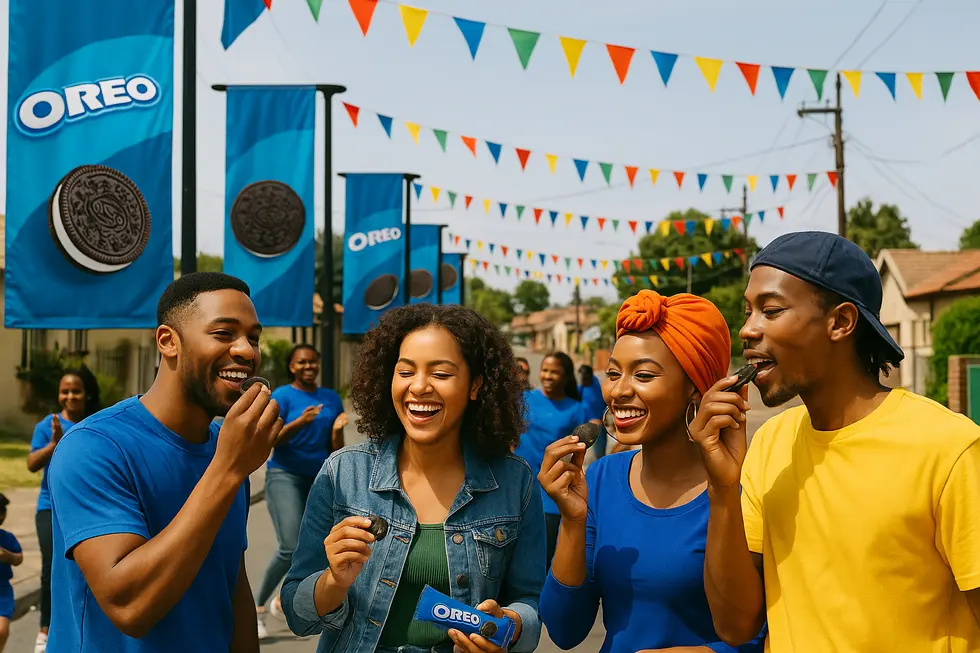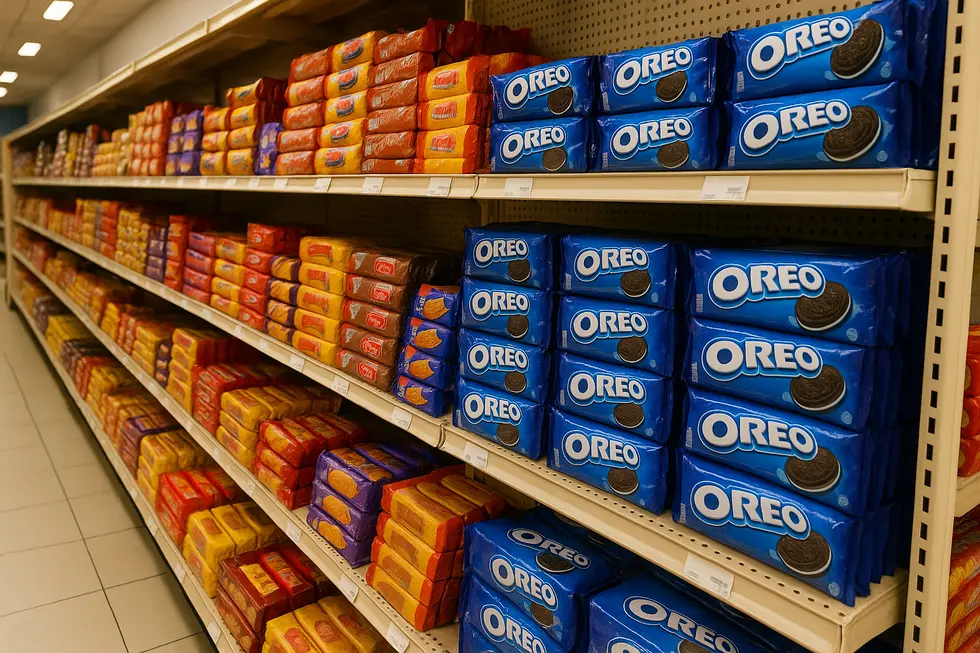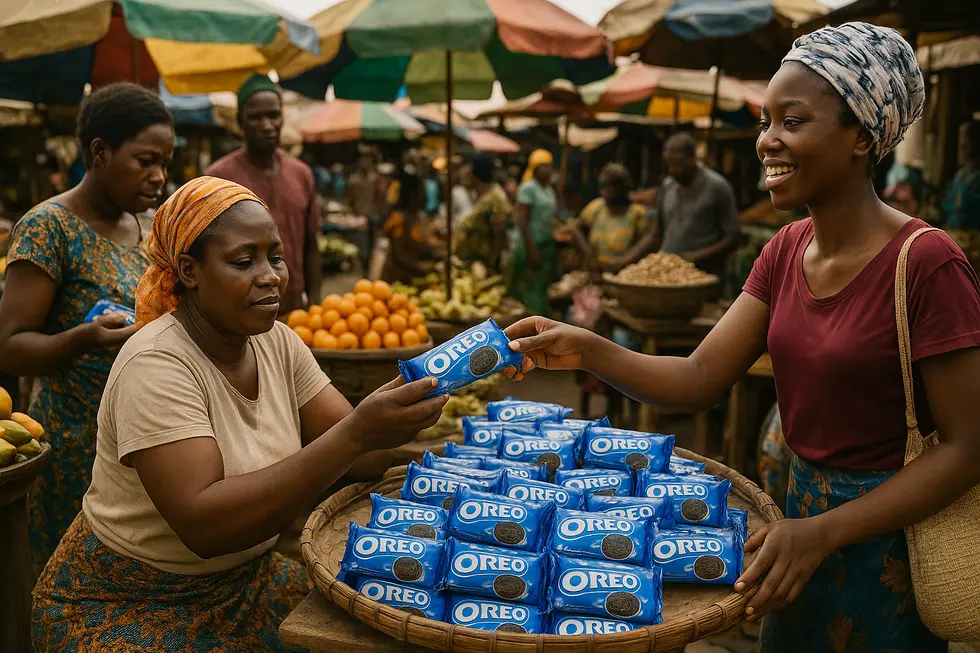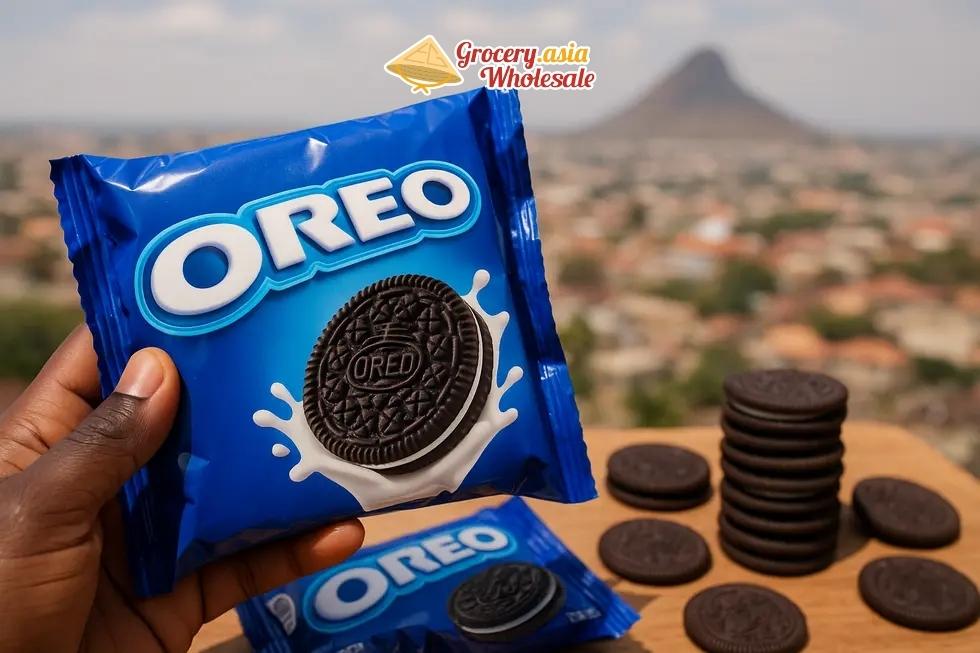No products in the cart.
Confectionery, Food News, Oreo
Oreo’s Expanding Footprint: Unpacking Market Demand in Africa
Oreo’s market demand in Africa is experiencing a notable upswing, driven by strategic investments in production facilities and localized marketing approaches. Mondelez International, recognizing the increasing appetite for Oreos across Africa, has made substantial investments in local production, enabling them to meet rising consumer demand efficiently. Their innovative marketing strategies are tailored to resonate with local audiences, reflecting a dedication to understanding and integrating within diverse markets. Each chapter of this article delves into different aspects, from investment in manufacturing capabilities to analyzing consumption trends, all contributing to a comprehensive understanding of Oreo’s significant market dynamics on the continent.
Table of Contents
A Deep Dive into Oreo’s Manufacturing Expansion in Africa

Mondelez International’s significant investment in Morocco marks a milestone in Oreo’s growth strategy in Africa. With nearly $11 million allocated to develop its largest Oreo production facility in Casablanca, Mondelez International is clearly committed to scaling up operations to meet increasing demand. This modern plant is expected to roll out up to 900 million Oreo biscuits annually, translating to a staggering 2.5 million biscuits per day. Such capacity ensures the abundant availability of Oreos across Morocco’s 34 million-strong population.
This investment is not simply about increasing production capacity; it represents a strategic move to embed Oreo more deeply into the African market. By manufacturing locally, Mondelez not only reduces logistical costs but also fortifies its supply chain efficiencies. This operational shift could facilitate faster delivery and wider distribution, enhancing Oreo’s market penetration and competitiveness in Africa.
The construction of this facility also promises to invigorate the local economy by creating jobs and fostering partnerships with local businesses. By integrating high-quality production standards synonymous with its European and U.S. counterparts, Mondelez underscores its dedication to maintaining Oreo’s global quality reputation. This strategic placement in Casablanca aligns with Mondelez’s forward-looking approach to tap into Africa’s burgeoning biscuit market, setting the stage for sustained growth in the region.
For more detailed insights, visit the source.
Crafting Oreo’s Cultural Appeal: Strategies in African Markets

Oreo’s approach to conquering African markets is a masterclass in integrating cultural nuance and local engagement, particularly evident in South Africa and Morocco. In South Africa, the #AskOreo campaign has transformed the cookie into more than just a snack; it’s now a catalyst for interaction and social media buzz. Limited edition Oreos printed with fun answers to common questions invite consumers to ‘let the cookie decide,’ turning the simple act of eating a cookie into a playful, culturally resonant experience. This strategy is not only engaging but also brilliantly taps into the dynamic digital culture, appealing primarily to the youth demographic who thrive on such interactive experiences.
Meanwhile, in Morocco, Mondelez International’s investment of almost $11 million in a local production facility underscores its commitment to African markets. By establishing manufacturing capabilities in Casablanca capable of producing 900 million Oreos annually, Mondelez ensures product freshness and availability while also bolstering the local economy. This localization of production reduces logistical costs and strengthens brand authenticity, making Oreos an integral part of consumers’ daily lives.
These dual strategies of cultural customization and local production investment underscore Oreo’s dedication to capturing the hearts and minds of diverse African consumer bases, cementing its foothold within these emerging markets. For more insights on these initiatives, you can watch the #AskOreo campaign in action.
Exploring Oreo’s Rising Appeal in Africa’s Diverse Snack Market

Oreo consumption patterns across Africa are an intriguing reflection of shifting consumer preferences and economic dynamics. Mondelez International’s $11 million investment in Morocco underscores a strategic intent to amplify local production, ensuring these beloved cookies are readily accessible to a burgeoning consumer base. This move not only strengthens the supply chain but also strives to maintain the global standard of Oreo quality despite geographical and logistical challenges.
The continent’s growing inclination towards convenient snacks fits perfectly with Oreo’s single-serve packs, which cater to the fast-paced lifestyles of urban dwellers and school-going children. The universal allure of chocolate biscuits dovetails with the continent’s gradual trend toward mindful snacking, where portion control and the quality of indulgence are becoming critical factors for consumers.
However, the economic landscape varies markedly across Africa, influencing how these consumption trends manifest. In South Africa, economic hurdles like high interest rates impact consumer spending, yet they also position Oreos as an attainable luxury when marketed as affordable indulgences. Understanding these economic variables is vital, as they can dictate the success of localized production and tailored marketing strategies.
For more insights into Oreo’s strategic moves in Africa, check out this article on Mondelez International Brings First Made-in-Morocco Oreo Biscuits.
Oreo’s Resilient Dominance in Africa’s Biscuit Market

Oreo stands tall in the African biscuit market, a testament to Mondelez International’s strategic prowess and investment. The influence of Oreo extends across the continent, primarily driven by its enduring brand appeal and innovations tailored to regional tastes. In Africa’s burgeoning chocolate biscuit segment, Oreo shines as a market leader, a position bolstered by the parent company’s vast experience in global snacking. In comparison to competitors such as Mars, Nestlé, and Ferrero, Oreo has maintained an exceptional allure, particularly with its signature cream-filled chocolate biscuits that resonate with the growing demand for indulgent snack options.
Focusing on the specificities of the African market, Oreo exploits Mondelez’s robust distribution networks, particularly visible in South Africa, which commands a significant portion of regional market shares. The allure of Oreo is further amplified by new product innovations, such as diverse flavor offerings that cater to evolving consumer preferences. Such adaptability helps Oreo maintain its competitive edge despite challenges in global markets like India.
The socio-economic landscape in Africa, characterized by rapid urbanization and increasing disposable income, further cements Oreo’s stronghold. Convenient snack formats are increasingly sought after, and with Oreo leading the chocolate biscuit category poised to dominate over a third of the market share by 2025 globally, the brand’s future in Africa looks promising. Explore more about Oreo’s market presence in Asia.
Boosting Biscuit Demand: The Role of Local Oreo Production in Africa

The introduction of localized Oreo biscuit production in Africa, particularly through Mondelez International’s new facility in Casablanca, Morocco, marks a pivotal moment in the African biscuit market. This strategic investment of approximately $11 million underpins a significant boost in both product availability and market demand across the continent. With a capacity to produce up to 900 million biscuits annually, this facility not only meets the needs of Morocco’s 34 million inhabitants but also facilitates distribution throughout North Africa and beyond.
Local production plays a critical role in enhancing supply reliability, drastically reducing import costs, and ensuring fresher products all while catering to regional tastes. This initiative supports local economies by fostering trusted trade partnerships and stimulates growth in the broader biscuit market. By reducing dependency on imports from Europe or the United States, Mondelez can offer competitive prices, thus encouraging higher Oreo consumption rates.
This trend mirrors a global pattern of “friendshoring,” emphasizing resilient supply chains through localized production. Such strategies are crucial in various markets, particularly where economic conditions fluctuate. The ability to respond quickly to regional dynamics ensures robust market presence and sustained demand—an important consideration as seen in diverse markets like India.
Localized Oreo production is a strategic move that heightens market growth potential by improving both availability and affordability of the product, positively impacting consumer demand and supporting local growth strategies. For further details on this development, see Mondelez in Morocco.
Final thoughts
Oreo’s strategic focus on enhancing its manufacturing footprint and marketing tailored to African cultures has significantly bolstered its position within the market. By investing in local production facilities, Mondelez International has ensured a steady supply to meet the growing demand. The targeted marketing strategies resonate well with local consumers, reinforcing brand loyalty. As Oreo continues its expansion across Africa, the landscape of the biscuit market is transforming, offering lucrative opportunities for wholesale importers.
👉 Source sustainable Oreo? 👉 Contact us now for wholesale pricing and product catalogs.
About us
Asia Grocery Co., Ltd is a trusted distributor, wholesaler, and exporter of fast-moving consumer goods (FMCG) from Vietnam, backed by over 20 years of expertise. We deliver authentic products from globally recognized brands such as P&G, Unilever, Redbull, Coca-Cola, Pepsi, Asiadeli, along with traditional and culturally significant Asian products, catering to customers worldwide with a special focus on Vietnamese and Asian communities abroad.


